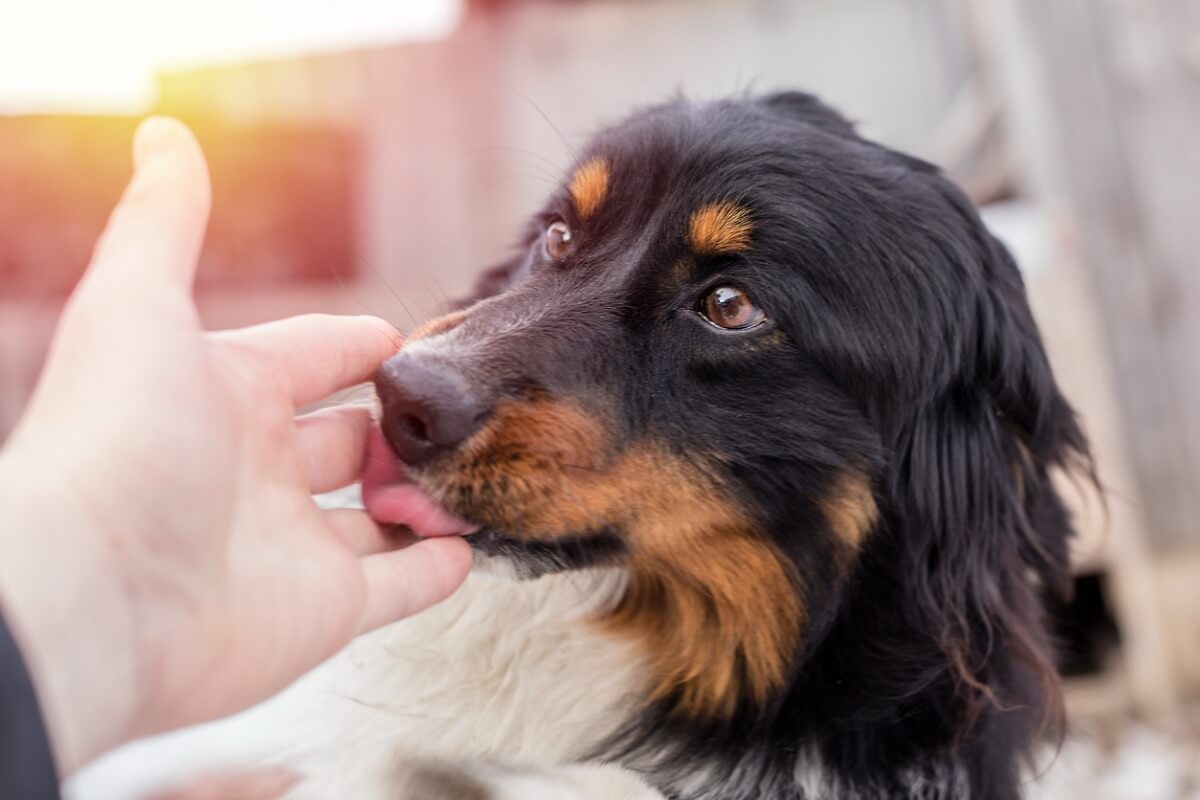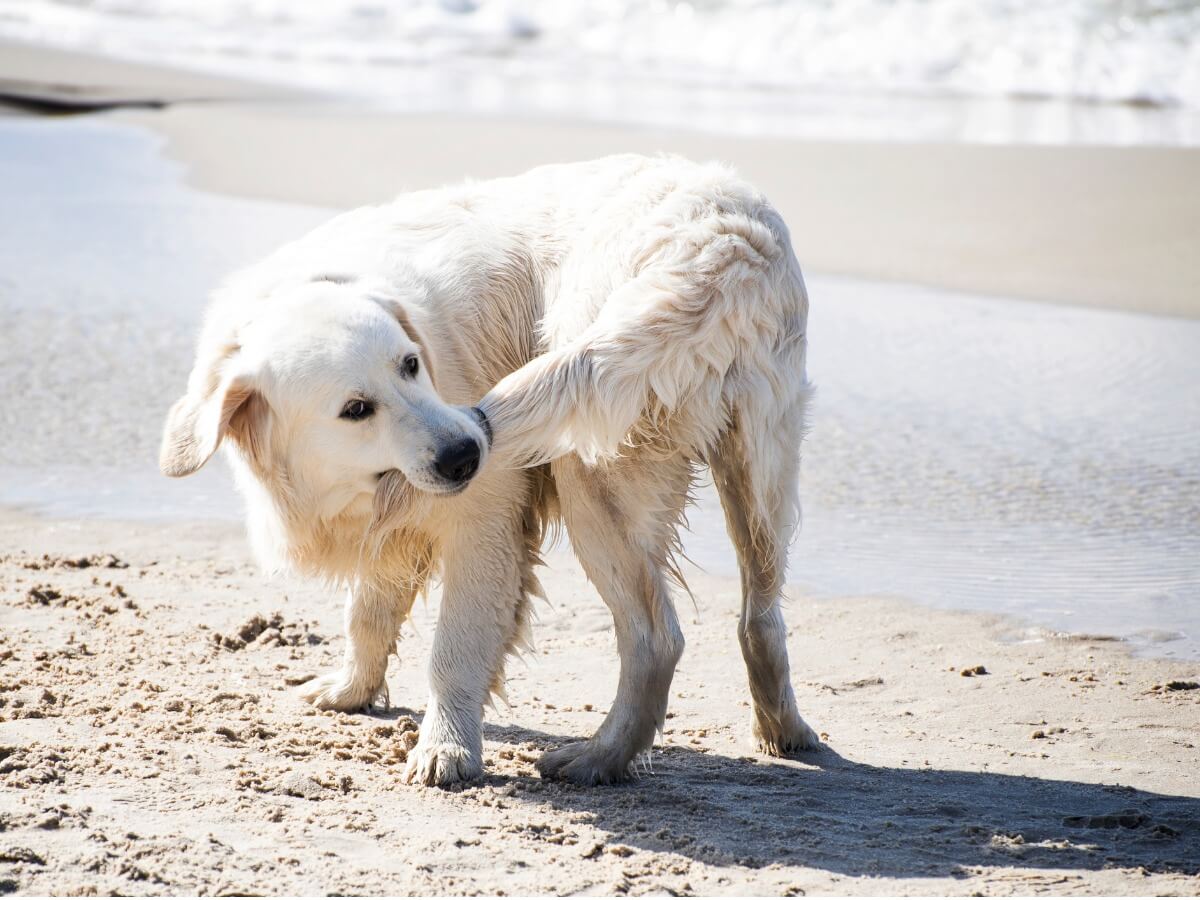8 Gestures in Dogs that We Misinterpret

The long-standing relationship between humans and dogs has made communication between the two species intuitive and simple. Even so, we can still misinterpret some gestures in dogs, because it’s so easy to confuse them with similar behavior in humans.
This is why, before welcoming one of these animals into your home, you should do some basic research on canine communication. This small effort will make things much easier when it comes to establishing a healthy relationship with the dog and a fluid communication. Here are some behavior patterns and gestures that we humans tend to misinterpret. Don’t miss it!
Gestures in dogs that we often misinterpret
In general culture, we’re aware of some basic aspects of canine behavior, such as dogs putting their tails between their legs when they’re afraid, showing their teeth to threaten, and barking to frighten and warn. However, many of these signs and gestures are more complex than they seem and are very often misinterpreted. Here are several examples of this.
1. Licking
When a dog licks itself, or licks its lips, it’s logical to think that it must be looking at, or thinking about, a succulent plate of food. This is an intuitive association, as dogs salivate when they anticipate that they’re going to eat, and they lick their lips accordingly.
However, they can also give themselves rapid, short, repetitive licks on the muzzle. This behavior is actually due to a dog feeling uncomfortable about a situation they find themselves in.
2. Quick licks
Sometimes, the most instinctive way we humans can think of to show affection towards our dog is to hug, kiss, or even hold him in our arms. On some of these occasions, the dog will give us quick, sharp licks during the process.
Sometimes, this gesture isn’t the dog returning your affection; it can also be a way to placate what they may consider to be a threat. Dogs externalize their affection in other ways, such as resting by your side, and they often find human displays of affection invasive and uncomfortable.

3. Making a “sorry face”
How many times have we said, or heard someone else say, things like “look at their face, they know they’ve done wrong”? It’s quite true that dogs are able to anticipate that their “wrong” actions will trigger a negative response from you, but the term “regret” is somewhat inaccurate.
A dog doesn’t regret their actions as a human would. Instead, what they do is to show submission when you scold them for inappropriate behavior, and this is why we see gestures such as putting their heads down, averting their gaze, or whining. In other words, they know they have done something that has displeased you and they try to placate your reaction in some way.
Strangely enough, it hasn’t been proven that dogs are capable of feeling regret for a specific action.
4. Staring
For humans, someone keeping eye contact with you, even staring, is only a threat where there’s antagonism or a possible aggressive reaction in the other person. Otherwise, eye contact is quite normal, and is often something that we appreciate in other people.
For dogs, on the other hand, if someone looks at them for more than a few seconds, they can take it as a form of defiance. They may notice your stare when they’re reluctant to do what you’re asking them to do, but it’s quite likely that they’ll interpret an intense stare as a threat.
5. Yawning
Of course, dogs yawn when they’re sleepy. But have you ever stopped to think why your dog does it while you’re scolding them? It’s not that your words are making them sleepy! It’s another one of those gestures in dogs that we often misinterpret.
Yawning is also a sign of calm that the dog uses to relieve stress in tense situations. This action, in particular, has the added function of showing its teeth, and so that the dog sends a warning message while trying to defuse the conflict. Take a look at this fascinating article about yawning in dogs to find out more about the topic.
6. Barking
A dog’s bark has so many nuances and meanings that it’s easy to misinterpret it at times. From a simple call for attention to a warning of danger, it’s the most useful and versatile form of communication that these animals have.
So, take the time to analyze how and when your dog barks. Have a look at this article from My Animals that looks at the meaning of barking in detail. Also, if you want to teach them not to bark, you must first find out the causes of this behavior. Each vocalization has a specific meaning depending on the context and the animal that emits it.
7. Asking for affection
Just like yawning, asking for affection has a clear meaning: the dog wants to be pampered. However, sometimes it’s a form of appeasement when there’s tension in the environment.
This is not a bad thing per se, because the healthy thing to do when faced with a conflict is to carry out actions that can resolve it. The only thing you should be careful with is that this appeasement doesn’t override the training that you’re giving your dog.
For example, if you have taken a toy away from your dog because they’re breaking it, you can accept their attempts to calm you down, but don’t give the toy back to them until after the conflict has passed.
8. Tail wagging
Finally, here’s one of the best-known gestures in dogs that we humans often misinterpret. When a dog wags its tail, the first thing that comes to a person’s mind is that they’re happy. This is true, but there’s a nuance to take into account: what the animal feels isn’t happiness as such, but a general nervous activation.
A dog wags its tail if it feels intense joy, but also if it’s nervous or restless. An example of this is when they’re at the vet’s clinic for some sort of procedure such as taking blood. If you see them wagging their tail at that moment, it’s certain that they’re not enjoying being pinned down and pricked with a needle. What they’re feeling is nervous agitation.

As you can see, accurately interpreting canine behavior is a task that requires living with one of these animals. It’s a learning process that can take years, so be patient and watch every gesture they make carefully. Of course, if you’re finding it hard to know what these gestures in dogs mean, then don’t hesitate to consult a professional ethologist.
All cited sources were thoroughly reviewed by our team to ensure their quality, reliability, currency, and validity. The bibliography of this article was considered reliable and of academic or scientific accuracy.
- Dog Body Language. (s. f.). Best Friends Animal Society. Recuperado 13 de enero de 2022, de https://resources.bestfriends.org/article/dog-body-language
- Yin, S., & McCowan, B. (2004). Barking in domestic dogs: context specificity and individual identification. Animal behaviour, 68(2), 343-355.